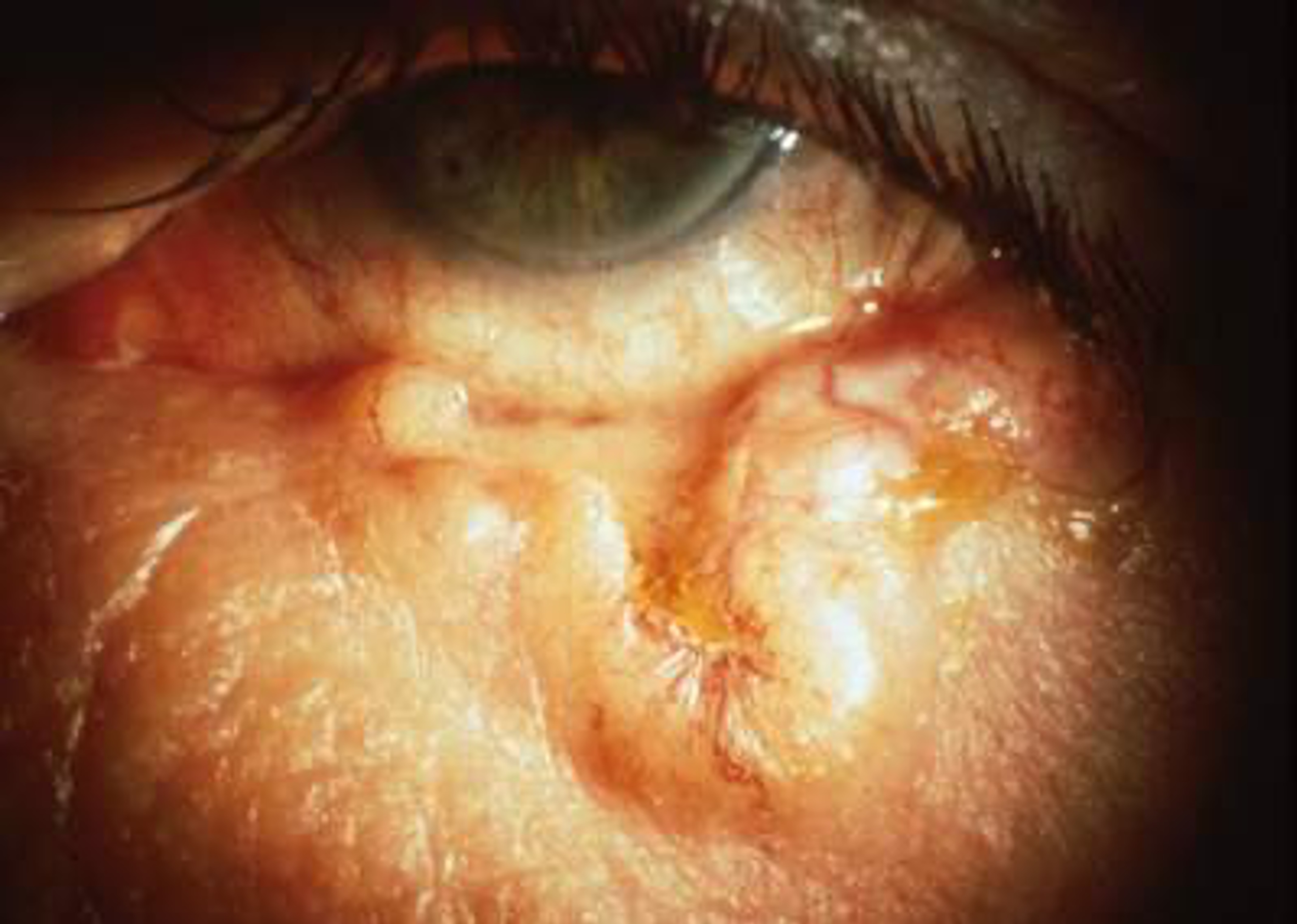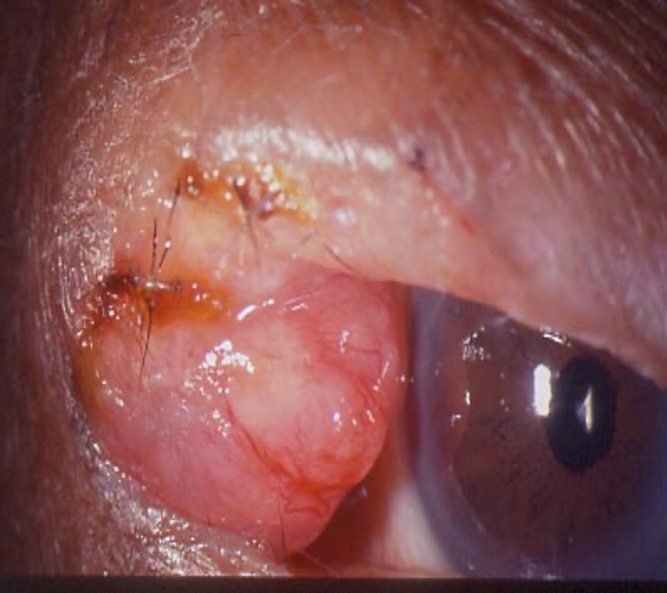<< Dr. Bita Esmaeli's homepage
Eyelid Cancers
Eyelid cancers are relatively common and are typically diagnosed early due to their visible location on the face and around the eyes.
Basal cell carcinoma

The most common eyelid cancer is basal cell carcinoma. It most often occurs on the lower eyelid, but it can also involve the upper eyelid, medial canthus, or lateral canthus. Diagnosis is typically based on clinical appearance and confirmed with a biopsy. The standard treatment is surgical excision with frozen section margin control, such as Mohs surgery, usually performed on an outpatient basis. A variety of reconstructive techniques are available, generally providing good functional and aesthetic outcomes.
Squamous cell carcinoma

Squamous cell carcinoma is the second most common eyelid cancer and is generally more aggressive than basal cell carcinoma. It can occur on the lower eyelid, upper eyelid, medial canthus, or lateral canthus. Treatment involves surgical excision with frozen section margin control. Reconstruction of surgical defects is typically performed by an ophthalmic plastic surgeon using various techniques, usually on an outpatient basis.
Sebaceous cell carcinoma


Sebaceous cell carcinoma is the third most common malignancy of the eyelid and periocular region, though it is relatively rare. Early diagnosis requires a practitioner with clinical familiarity. Initial treatment involves surgical excision. Regional lymph nodes in the parotid and neck are evaluated for metastasis at diagnosis and during follow-up. In some cases, topical chemotherapy may be used in addition to surgery.
Melanoma

Melanoma of the eyelid is a rare malignancy. Treatment involves wide surgical excision, with reconstructive surgery typically delayed until pathological evaluation of surgical margins is complete. Regional lymph nodes are assessed to rule out metastasis. Additional tests for distant metastasis are performed at diagnosis and during follow-up surveillance.